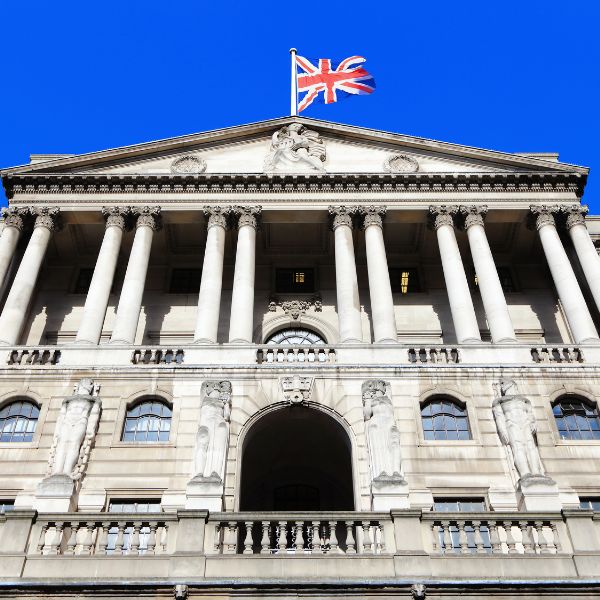What has happened, why, and what next.
Writing this at the beginning of 2024, interest rates around much of the developed world are higher than we have known for many years, in fact for decades.
By Philip Oxley
This article is published on: 11th March 2024
What has happened, why, and what next.
Writing this at the beginning of 2024, interest rates around much of the developed world are higher than we have known for many years, in fact for decades.
This is the first part of this article on the subject, where I will look back at events over the past couple of years and what we can expect to happen next. The second part of the article will focus on what this all means in relation to the world of savings and investments, particularly when interest rates are higher than we have seen for decades.
Overview
Without delving too deeply into the world of macroeconomics, I think it is helpful to provide a brief overview of what has happened over the past couple of years in relation to inflation and interest rates and why. I will then look forward to what can we expect to take place over the next 6-12 months.
a) Interest rates – what has happened and why?
Central Bank Rate
In the UK, the Bank of England base interest rate is 5.25%. In the US, the Federal Reserve increased rates at a speed rarely seen before and rates are currently 5.5%. Finally in the Eurozone, the European Central Bank (ECB) rate, which is applicable in France, is 4.5%.
Outside of these areas, rates have increased in many other countries around the world (Japan is the notable exception, for now). In China rates are currently 3.45%, in India 6.5%, Russia 16% and Türkiye 45%.
Why have interest rates increased?
In a word, inflation. UK’s inflation rate peaked last year at 11.1% and you need to go back to the 1980’s to find a time when inflation reached higher levels. In France, inflation peaked at 6.3% last year and in the US at 9.1%, and again these rates were last reached in both countries back in the 1980s.

Who is responsible for controlling inflation?
It is the primary mandate of both the Bank of England’s Monetary Policy Committee (MPC) in the UK and the Eurozone’s ECB’s monetary policy to maintain price stability. For the MPC it is to “set monetary policy to achieve the Government’s target of keeping inflation at 2%” and the ECB it is “by aiming for 2% inflation over the medium term”. The equivalent body in the US is the Federal Reserve and interestingly, they have a dual mandate, which is to “achieve maximum employment and keep prices stable.”
I do not think it is too controversial to state that all three have failed to some extent in their primary objective over the past 18 months. Although in the US, employment levels have remained impressively high, so we should give the US Federal Reserve some credit for that.
How do you reduce inflation?
There are various tools and theories in relation to the control of inflation, including controlling the money supply (from where the phrase “monetarism”, commonly used during Mrs Thatcher’s time in power comes), Quantitative Tightening (QT) which is essentially rolling back and reversing years of Quantitative Easing (QE) that the central banks employed both after the Global Financial Crisis in 2008/9 and again during the Covid pandemic to boost economies. However, the primary tool used by all central banks is interest rates.
How do interest rates reduce inflation?
Higher interest rates suck money out of the economy, dampening spending, and loans. For consumers, mortgages, loans, and credit cards cost more, leaving less money to spend, resulting in lowering demand and inhibiting price rises. In addition, people are encouraged not to spend but to save, as it becomes easier to obtain a return on savings. Again, this adds to the reduction in consumer spending and businesses need to respond by either cutting prices or reducing the level of increases thus facilitating lower inflation.
Usually, a period of increasing interest rates is followed by increasing unemployment as businesses struggling under higher costs and lower sales must find ways to cut costs (and for many businesses, labour costs are a sizeable proportion of their cost base). This increase in unemployment can have a dampening effect on wage increases (people are prepared to accept a job offer at a lower rate than hitherto before), again all feeding into a deflationary cycle. I say usually, because employment levels have remained impressively robust in the US, UK, and the Eurozone.
b) Interest rates – what next.
Current interest rates
It is always a foolhardy exercise to try and predict events in the financial markets, but there are enough signals now, that some events appear to be inevitable (although I am keeping my fingers crossed that I do not regret writing this!)
In the US, the last interest rate increase by the Federal Reserve was in July 2023, in the UK the last increase of interest rates, to 5.25%, was in August 2023 and the ECB’s last rate increase was last September. Those rates have remained at that level ever since.
Last year market analysts starting using phrases like “higher for longer” and that rates would follow the profile of Table Mountain (a flat-topped mountain in South Africa if you are not familiar with it) in their assessment of what would happen to interest rates in the future. Another way of saying that once rates hit their peak, they would stay at that level for some time – and this has proven to be true.

What next for interest rates
Market analysts are strongly predicting that 2024 will be a year when interest rates start to decline. The only aspect of this prediction that seems uncertain is when the cuts will begin. The consensus is from Spring/early Summer with the ECB and/or Federal Reserve perhaps being the first to start the cycle of rate cutting.
Why in this important?
All the central banks are treading a fine line – trying to balance on one hand, calibrating interest rates to ensure the elimination of high inflation and bring levels back to around 2% sustainably. On the other hand, if they keep rates high for too long, they risk pushing their economies into recession. It is too late for the Central Bank of England, as the UK is already technically in recession (two successive quarters of negative GDP growth), as is Japan. The Eurozone is also perilously close to recession, but it is currently believed that the US is likely to avoid recession.
It is also important because high interest rates impact businesses as well as consumers and typically the financial markets have responded positively to the start of a rate cutting cycle which among other items, will be discussed in the second part of this article.